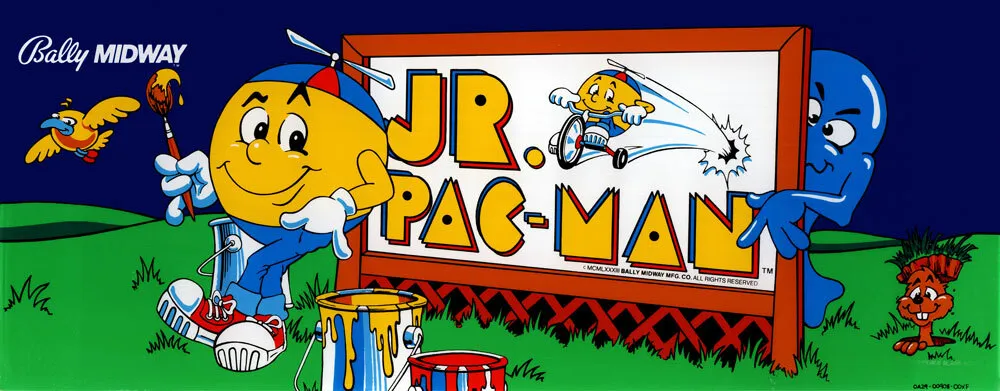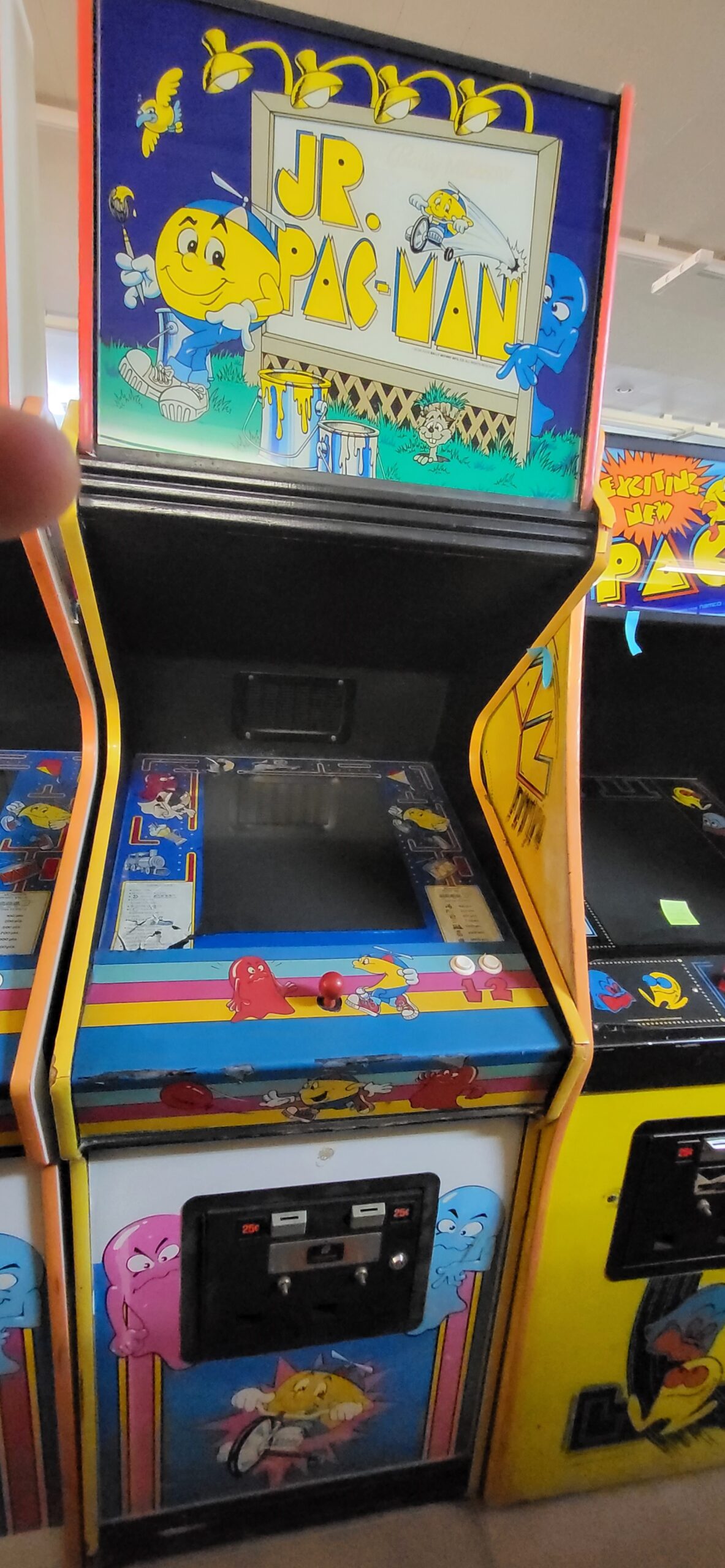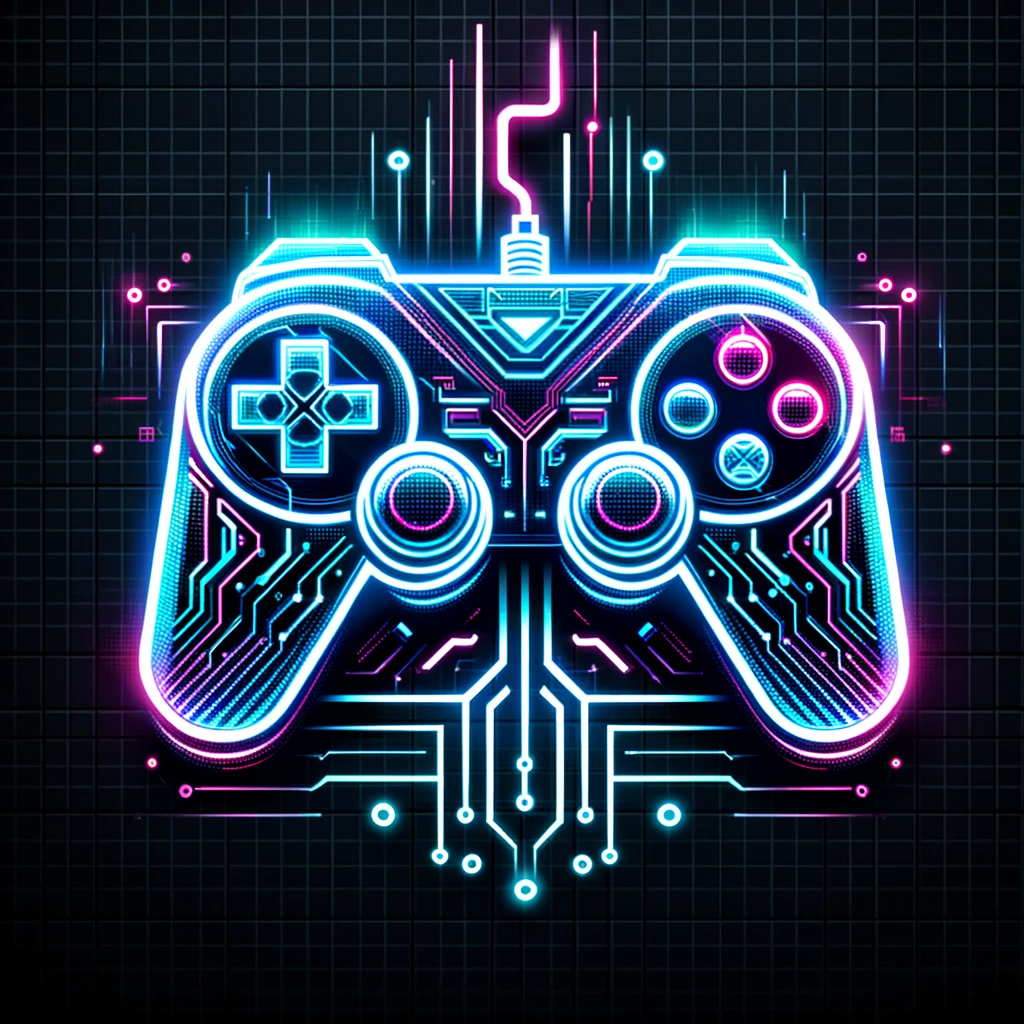
Jr. Pacman
Arcade / General Computer Corporation/Bally Midway 1983
Jr. Pac-Man, developed by General Computer Corporation (GCC), is an iconic arcade video game released in 1983. Serving as a sequel to the immensely popular Pac-Man series, Jr. Pac-Man introduced new elements to the classic gameplay, featuring larger mazes, scrolling screens, and dynamic gameplay that added a layer of complexity to the beloved formula.
The creation of Jr. Pac-Man involved General Computer Corporation, a company known for its innovative work in arcade game enhancement. GCC faced legal battles with Atari due to their previous projects, but Jr. Pac-Man emerged as one of their final creations. Released as an upgrade kit for existing Pac-Man cabinets, the game showcased the company’s commitment to pushing the technological boundaries of the time.
Jr. Pac-Man received mixed reviews upon its release. While players appreciated the enhanced graphics and increased difficulty, some criticized the scrolling screens for causing visibility issues. Despite the divided opinions, Jr. Pac-Man has since gained recognition as a unique entry in the Pac-Man series, contributing to the legacy of arcade gaming.
Jr. Pac-Man exists primarily as an arcade game, but it has also been featured in various retro gaming compilations, ensuring its legacy across different gaming platforms. The game is often discussed in the context of the broader Pac-Man series, as it represents a notable evolution in gameplay mechanics.
Jr. Pac-Man is considered relatively rare compared to other Pac-Man titles. Estimates suggest that only a limited number of machines were produced, adding to its desirability among collectors. Due to its scarcity, Jr. Pac-Man cabinets and kits can command a significant value in the retro gaming market, with prices fluctuating based on condition and authenticity.
Jr. Pac-Man ran on a Zilog Z80 CPU and featured custom hardware developed by General Computer Corporation. For potential repairs, enthusiasts often refer to the original schematics, which detail the game’s architecture. Key components for repair may include the Z80 CPU, sound and graphics hardware, and the control interface. The game’s distinctive artwork and cabinet design contribute to its aesthetic appeal and historical significance within the arcade gaming community.


